עוד בפרק זה:
אוקטובר 2023
הספרייה מציעה לקוראיה מידי חודש רשימת ספרים וכתבי-עת חדשים שנוספו לאוספיה כל רשומה מכילה:
מס' מיון, מחבר, כותר, מוציא לאור, שנת הוצאה , נושאים, תוכן עיניינים ותקציר.
כדי לראות מצב ההשאלות יש ללחוץ על כותר.
 |
29 LUC Lucia, Amanda J. White utopias : the religious exoticism of transformational festivals. Oakland, California : University of California Press, 2020 נושאים Festivals -- Social aspects Spirituality -- Social aspects Yoga תקציר Transformational festivals, from Burning Man to Lightning in a Bottle, Bhakti Fest, and Wanderlust, are massive events that attract thousands of participants to sites around the world. In this groundbreaking book, Amanda J. Lucia shows how these festivals operate as religious institutions for "spiritual, but not religious" (SBNR) communities. Whereas previous research into SBNR practices and New Age religion has not addressed the predominantly white makeup of these communities, White Utopias examines the complicated, often contradictory relationships with race at these events, presenting an engrossing ethnography of SBNR practices. Lucia contends that participants create temporary utopias through their shared commitments to spiritual growth and human connection. But they also participate in religious exoticism by adopting Indigenous and Indic spiritualities, a practice that ultimately renders them exclusive, white utopias. Focusing on yoga's role in disseminating SBNR values, Lucia offers new ways of comprehending transformational festivals as significant cultural phenomena. תוכן עניינים Introduction -- Romanticizing the premodern : the confluence of Indic and indigenous spiritualities -- Interlude : cultural possession and Whiteness -- Anxieties over authenticity : American yoga and the problem of Whiteness -- Interlude : "White people are on the journey of evolution" -- Deconstructing the self : at the limits of asceticism -- Interlude : sculpting bodies and minds -- Wonder, awe, and peak experiences : approaching mystical territories -- Interlude : producing wonder/branding freedom -- The cathartic freedom of transformational festivals : neoliberal escapes and entrapments -- Conclusion -- Appendix 1 : @Instagram data -- Appendix 2 : methodology.
|
 |
612.017 PAR Parham, Peter New York, NY : W.W. Norton & Company, 2021 נושאים Immune system Immunopatologia תקציר A clear, concise, and contemporary presentation of immunological concepts. This text emphasizes the human immune system and presents concepts with a balanced level of detail to describe how the immune system works. Written for undergraduate, medical, veterinary, dental, and pharmacy students, it makes generous use of medical examples to illustrate points. This classroom-proven textbook offers clear writing, full-color illustrations, and section and chapter summaries that make the content accessible and easily understandable to students |
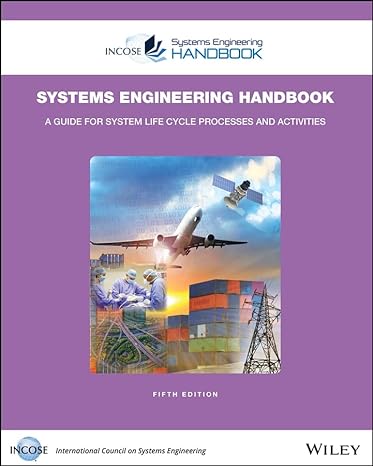 |
62.002.2(02) SYS Systems engineering handbook : a guide for system life cycle processes and activities / 5th ed. Hoboken, NJ : Wiley, 2023 נושאים Product life cycle Systems engineering תקציר This International Council on Systems Engineering (INCOSE) Technical Product was prepared by the INCOSE Systems Engineering Handbook Team. It is approved by INCOSE Technical Operations Leadership for release as an INCOSE Technical Product.
|
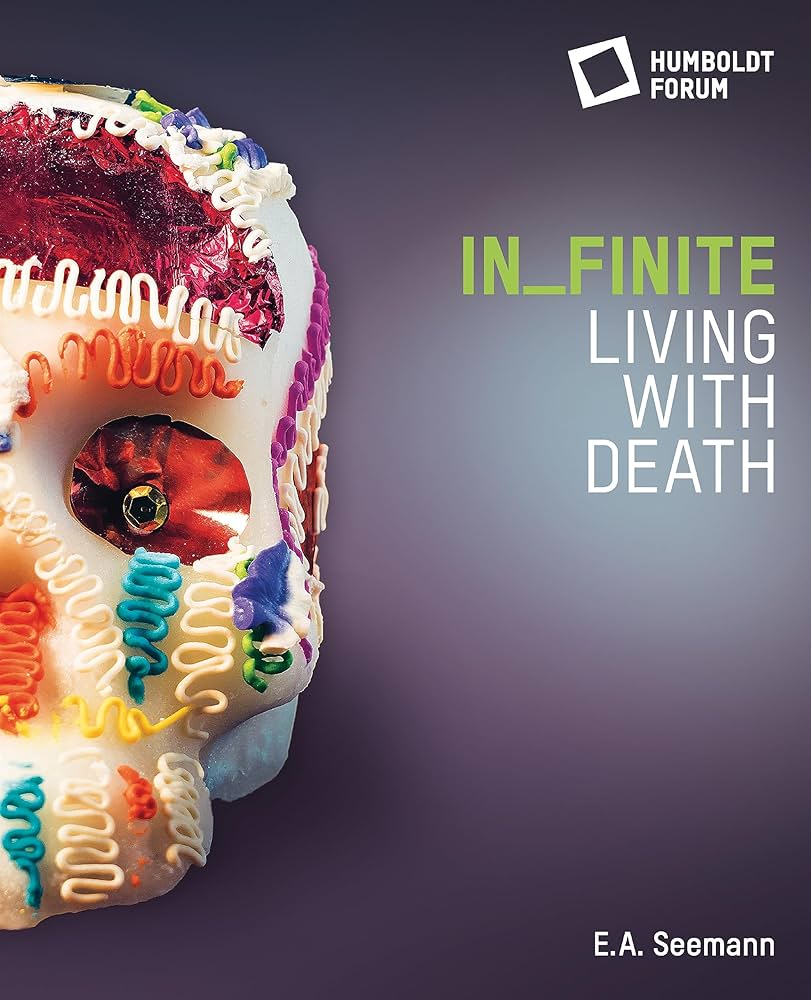 |
2-557 SEE In_finite - living with death. Leipzig : E.A. Seemann, 2023 נושאים Death -- Psychological aspects Future life Grief תקציר REGARDING OUR APPROACH TO THE END OF LIFE -Reflecting on the great unknown: What does death mean today? AN ENCOUNTER WITH THE MANY DIFFERENT NOTIONS OF DEATH |
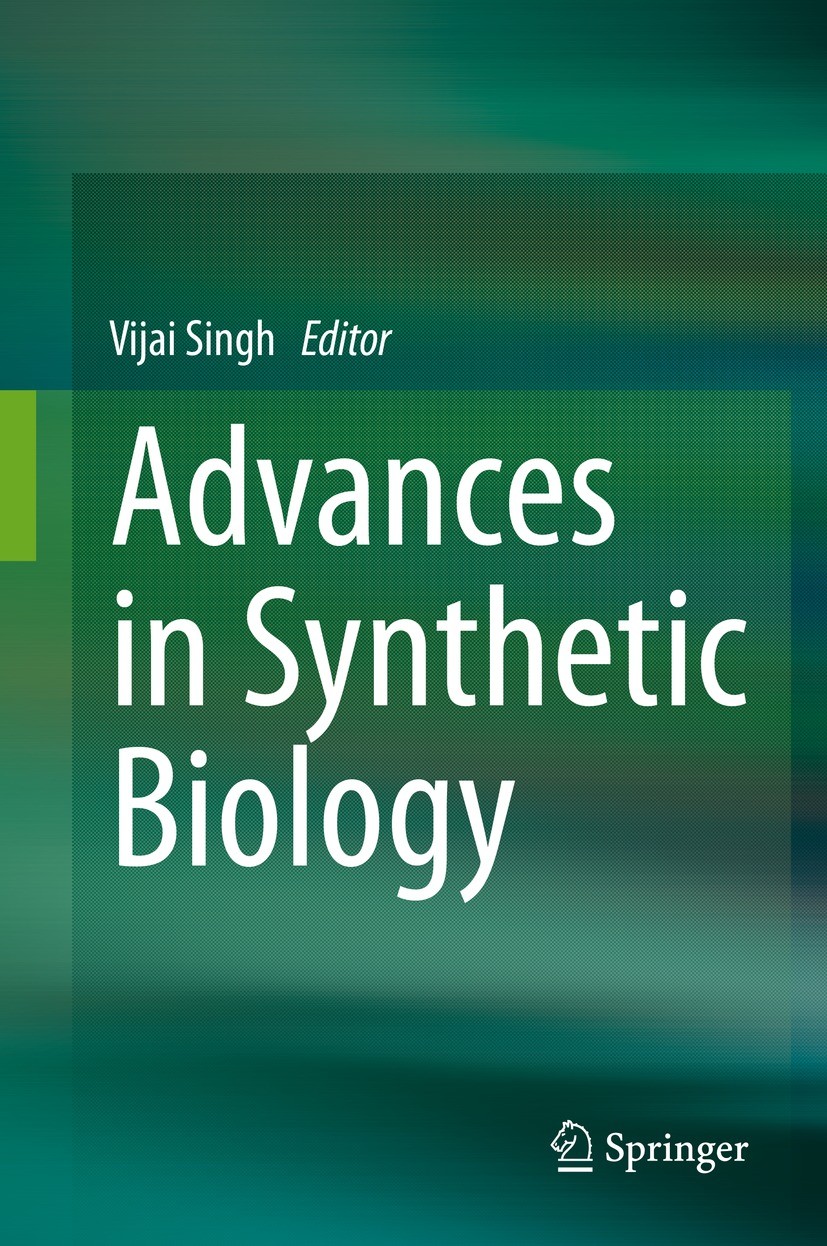 |
ספר אלקטרוני
Advances in synthetic biology. Singapore : Springer, 2020 נושא Syntetic biology תיאור/תקציר This book addresses the design of emerging conceptual tools, technologies and systems including novel synthetic parts, devices, circuits, oscillators, biological gates, and small regulatory RNAs (riboregulators and riboswitches), which serve as versatile control elements for regulating gene expression. Synthetic biology, a rapidly growing field that involves the application of engineering principles in biology, is now being used to develop novel systems for a wide range of applications including diagnostics, cell reprogramming, therapeutics, enzymes, vaccines, biomaterials, biofuels, fine chemicals and many more. The book subsequently summarizes recent developments in technologies for assembling synthetic genomes, minimal genomes, synthetic biology toolboxes, CRISPR-Cas systems, cell-free protein synthesis systems and microfluidics. Accordingly, it offers a valuable resource not only for beginners in synthetic biology, but also for researchers, students, scientists, clinicians, stakeholders and policymakers interested in the potential held by synthetic biology. תוכן עניינים Introduction to synthetic biology -- Current progress in synthetic genetic networks -- Current progress and limitations in the design, construction and characterization of synthetic parts -- Recent progress in DNA parts standardization and characterization -- Current status and challenges of DNA sequencing -- Biomimetic approaches in synthetic biology -- Design principles of synthetic biological oscillators -- Software-aided design of idealised programmable Nucleic acid circuits -- Digital circuit design for biological and silicon computers -- Engineering of riboregulators for gene regulation as a tool for synthetic biology -- Recent advances, challenges and opportunities in riboswitches -- Recent advances in gene and genome assembly : challenges and implications -- Recent advances, challenges and opportunities in synthetic genomes -- Expansion of the genetic code -- Expanding the potential of CRISPR-Cas9 technology for crops improvement -- Synthetic biology at the hand of cell-free systems -- Synthetic biology for the rapid, precise and compliant detection of microbes -- Application and challenges of synthetic biology -- Development and application of microfluidics in synthetic biology -- The ethics of synthetic biology research and development : a principlist approach.
|
 |
ספר אלקטרוני
An introduction to statistical learning : with applications in R. New York : Springer, 2021 נושאים Mathematical statistics Mathematical models תיאור/תקציר An Introduction to Statistical Learning provides an accessible overview of the field of statistical learning, an essential toolset for making sense of the vast and complex data sets that have emerged in fields ranging from biology to finance to marketing to astrophysics in the past twenty years. This book presents some of the most important modeling and prediction techniques, along with relevant applications. Topics include linear regression, classification, resampling methods, shrinkage approaches, tree-based methods, support vector machines, clustering, deep learning, survival analysis, multiple testing, and more. Color graphics and real-world examples are used to illustrate the methods presented. Since the goal of this textbook is to facilitate the use of these statistical learning techniques by practitioners in science, industry, and other fields, each chapter contains a tutorial on implementing the analyses and methods presented in R, an extremely popular open source statistical software platform. Two of the authors co-wrote The Elements of Statistical Learning (Hastie, Tibshirani and Friedman, 2nd edition 2009), a popular reference book for statistics and machine learning researchers. An Introduction to Statistical Learning covers many of the same topics, but at a level accessible to a much broader audience. This book is targeted at statisticians and non-statisticians alike who wish to use cutting-edge statistical learning techniques to analyze their data. The text assumes only a previous course in linear regression and no knowledge of matrix algebra. This Second Edition features new chapters on deep learning, survival analysis, and multiple testing, as well as expanded treatments of naive Bayes, generalized linear models, Bayesian additive regression trees, and matrix completion. R code has been updated throughout to ensure compatibility. תוכן עניינים Preface -- 1 Introduction -- 2 Statistical Learning -- 3 Linear Regression -- 4 Classification -- 5 Resampling Methods -- 6 Linear Model Selection and Regularization -- 7 Moving Beyond Linearity -- 8 Tree-Based Methods -- 9 Support Vector Machines -- 10 Deep Learning -- 11 Survival Analysis and Censored Data -- 12 Unsupervised Learning -- 13 Multiple Testing -- Index
|
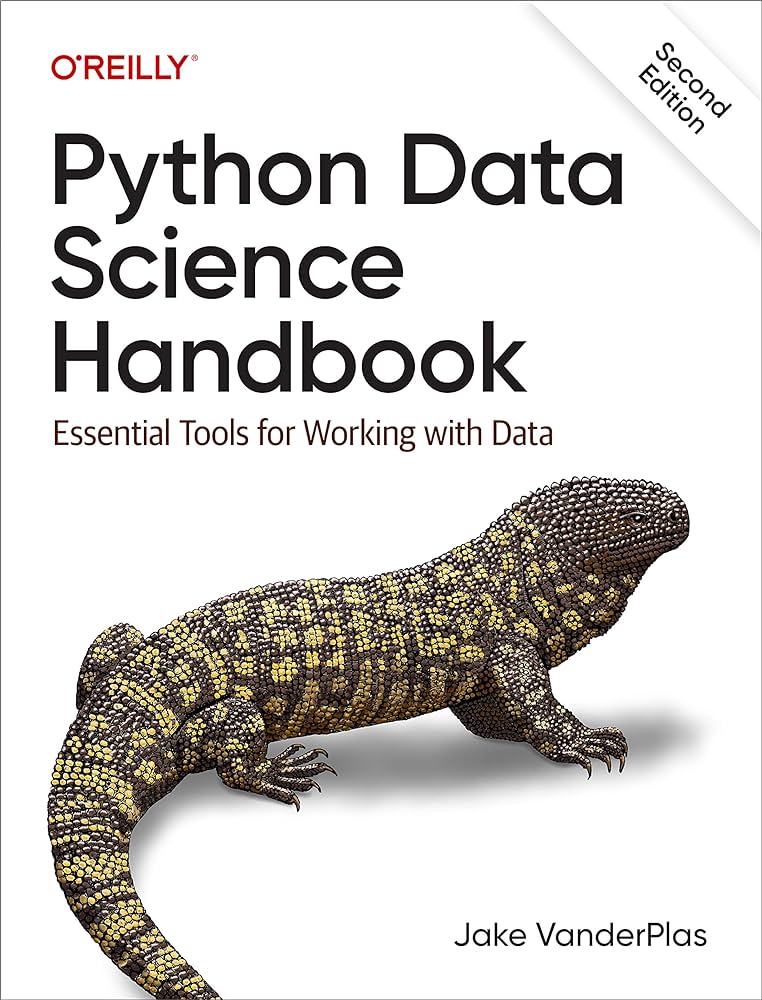 |
ספר אלקטרוני
Python data science handbook : essential tools for working with data / 2nd ed. Sebastopol, CA : O'Reilly Media, Incorporated, 2023 נושאים Python (Computer program language) Data mining תיאור/תקציר Python is a first-class tool for many researchers, primarily because of its libraries for storing, manipulating, and gaining insight from data. Several resources exist for individual pieces of this data science stack, but only with the new edition of Python Data Science Handbook do you get them all--Python, NumPy, pandas, Matplotlib, scikit-learn, and other related tools. Working scientists and data crunchers familiar with reading and writing Python code will find the second edition of this comprehensive desk reference ideal for tackling day-to-day issues: manipulating, transforming, and cleaning data; visualizing different types of data; and using data to build statistical or machine learning models. Quite simply, this is the must-have reference for scientific computing in Python. With this handbook, you'll learn how: IPython and Jupyter provide computational environments for scientists using Python NumPy includes the ndarray for efficient storage and manipulation of dense data arrays Pandas contains the DataFrame for efficient storage and manipulation of labeled/columnar data Matplotlib includes capabilities for a flexible range of data visualizations Scikit-learn helps you build efficient and clean Python implementations of the most important and established machine learning algorithms.
|
 |
57 CAM Campbell essential biology with physiology / 6th ed. NY : Pearson, 2019 נושאים Biology Physiology Plant physiology תוכן עניינים 1 Introduction: Biology Today -- Unit 1: Cells -- 2: Essential Chemistry for Biology -- 3: The Molecules of Life -- 4: A Tour of the Cell -- 5: The Working Cell -- 6: Cellular Respiration: Obtaining Energy from Food -- 7: Photosynthesis: Using Light to Make Food -- Unit 2: Genetics -- 8: Cellular Reproduction: Cells from Cells -- 9: Patterns of Inheritance -- 10: The Structure and Function of DNA -- 11: How Genes Are Controlled -- 12: DNA Technology -- Unit 3: Evolution and Diversity -- 13: How Populations Evolve-- 14: How Biological Diversity Evolves -- 15: The Evolution of Microbial Life 16: The Evolution of Plants and Fungi -- 17: The Evolution of Animals -- Unit 4: Ecology -- 18: An Introduction to Ecology and the Biosphere -- 19: Population Ecology -- 20: Communities and Ecosystems -- Unit 5: Animal Structure and Function -- 21: Unifying Concepts of Animal Structure and Function -- 22: Nutrition and Digestion -- 23: Circulation and Respiration -- 24: The Body’s Defenses -- 25: Hormones -- 26: Reproduction and Development -- 27: Nervous, Sensory, and Locomotor Systems -- Unit 6: Plant Structure and Function -- 28: The Life of a Flowering Plant -- 29: The Working Plant
|
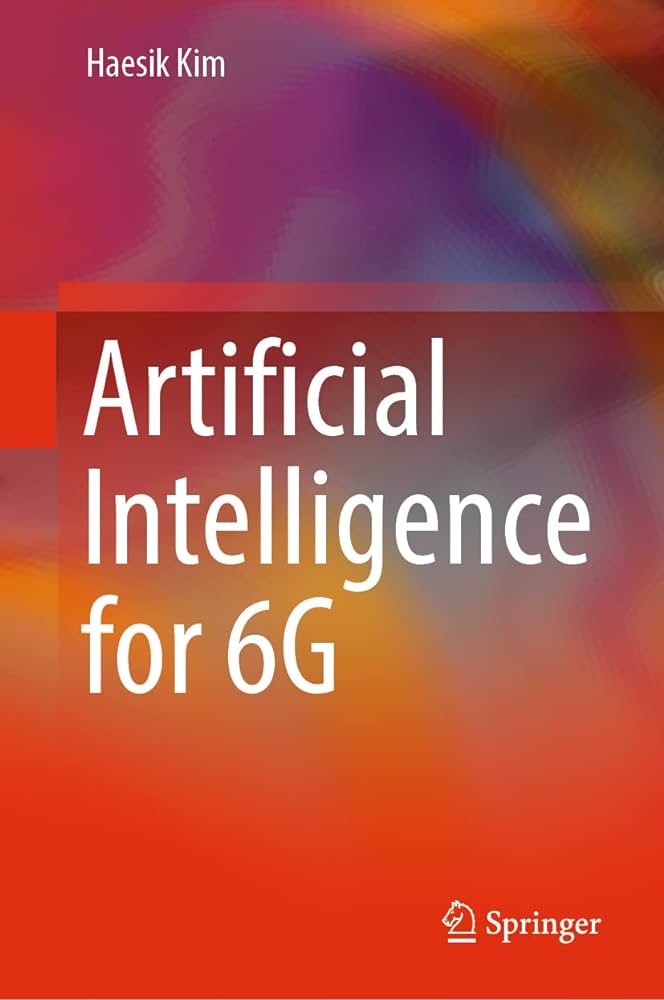 |
681.3AI KIM Kim, Haesik Artificial Intelligence for 6G Cham : Springer Nature Switzerland AG, 2022 נושאים Artificial intelligence Electrical engineering Applied mathematics תיאור/תקציר This textbook introduces Artificial Intelligence (AI) techniques for wireless communications and networks, helping readers to find solutions for communications and network problems using AI. Artificial Intelligence for 6G introduces, in a step-by-step manner, AI techniques such as: unsupervised learning;supervised learning;reinforcement learning; anddeep learning. It explains how these techniques can be used for wireless communications and network systems, particularly in designing and optimizing 6G networks. This book is at the forefront of 6G research, and will be of interest internationally, to graduate students, academics, engineers, and developers who are focused on future development of network systems and mobile communications. תוכן עניינים Part I: Artificial Intelligence Techniques.- Chapter 1. Historical Sketch of Artificial Intelligence.- Chapter 2. Unsupervised Learning.- Chapter 3. Supervised Learning.- Chapter 4. Gradient Descent.- Chapter 5. Reinforcement Learning.- Chapter 6. Deep Learning.- Part II: Artificial Intelligence Enabled Techniques for 6G.- Chapter 7. Artificial Intelligence and 6G.- Chapter 8. AI for Big Data.- Chapter 9. AI Enabled Wireless Communications.- Chapter 10. AI Enabled Networks.- Chapter 11. AI Empowered Mobile Applications.
|
 |
E91.4 MAI Maier, Martin 6G and onward to next G : the road to the multiverse Hoboken : Wiley-IEEE Press, 2023 נושאים Wireless communication systems -- Technological innovation תקציר This book weaves emerging themes in future 6G and Next G networks carefully together. It points to three spheres of contexts with different narratives for the year 2030 and beyond, in which the coming Metaverse as the precursor of the future Multiverse can be embedded naturally. The book aims at providing the reader with new cross-disciplinary research material, ranging from communication and computer science to cognitive science, social sciences, and behavioral economics, for building a deeper Metaverse. It will be instrumental in helping the reader find and overcome some of the most common 6G and Next G blind spots.
|
 |
ספר אלקטרוני
Kreps, David Boulder : Routledge, 2018 נושאים תיאור/תקציר "In this book, Professor Kreps presents a first course on the basic models of choice theory that underlie much of economic theory. This course, taught for several years at the Graduate School of Business, Stanford University, gives the student an introduction to the axiomatic method of economic analysis, without placing too heavy a demand on mathematical sophistication.The course begins with the basics of choice and revealed preference theory and then discusses numerical representations of ordinal preference. Models with uncertainty come next: First is von Neumann Morgenstern utility, and then choice under uncertainty with subjective uncertainty, using the formulation of Anscombe and Aumann, and then sketching the development of Savage's classic theory. Finally, the course delves into a number of special topics, including de Finetti's theorem, modeling choice on a part of a larger problem, dynamic choice, and the empirical evidence against the classic models." תוכן עניינים Preface; 1 Introduction; 2 Preference Relations and Revealed Preference; 3 Ordinal Utility; 4 Choice Under Uncertainty: Formulations and Representations; 5 von Neumann-Morgenstern Expected Utility; Utility Functions for Money; 7 Horse Race Lotteries and Roulette Wheels; 8 Subjective Probability; 9 Savage's Theory of Choice Under Uncertainty; 10 Conditional Preference, Conditional Probability, and Contingent Choice; 11 Independence, Exchangeability, and de Finetti's Theorem; 12 Normative Uses of These Models on Subproblems; 13 Dynamic Choice Theory and the Choice of Opportunity Sets 14 The Experimental EvidenceReferences; Index
|
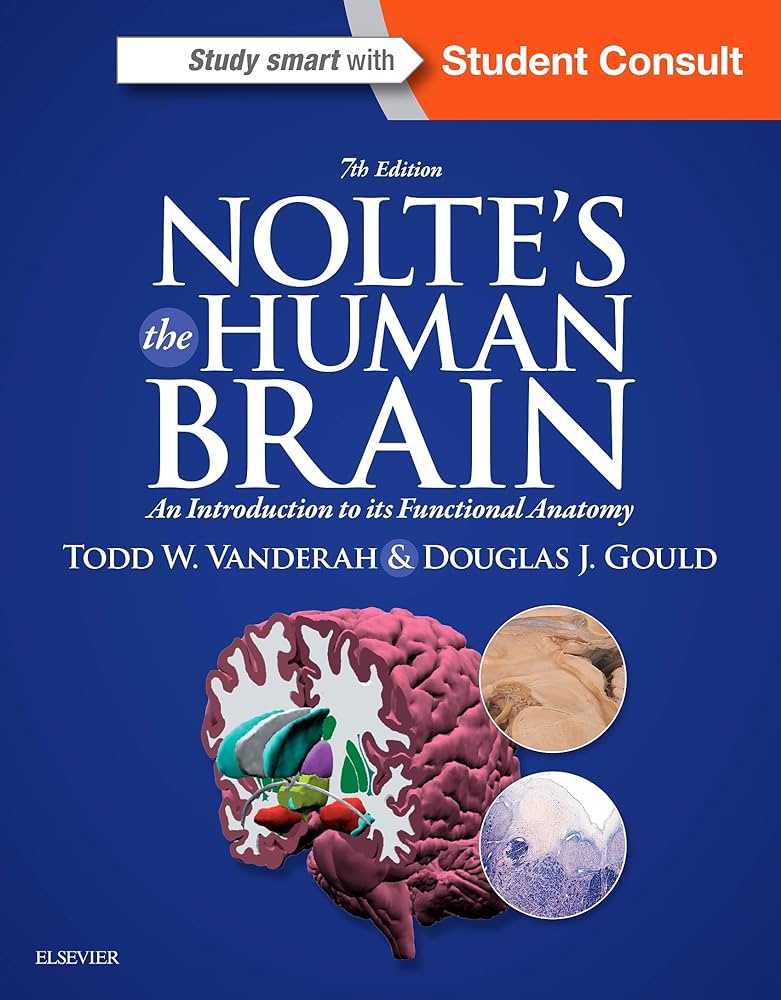 |
ספר אלקטרוני
Vanderah, Todd and Gould, Douglas Nolte's the human brain : an introduction to its functional anatomy / 7th ed. London : Elsevier Health Sciences, 2015r נושאים נושאי MESH Central nervous system -- Anatomy & histology Nervous System Physiological Phenomena תיאור/תקציר Already known as the reference of choice for expert coverage on the structure and function of the human brain and the nervous system, Nolte's The Human Brain continues to impress with essential updates throughout this new edition. It includes a new chapter on formation, modification, and repair of connections, with coverage of learning and memory, as well as the coming revolution of ways to fix damaged nervous systems, trophic factors, stem cells, and more. 550 full-color illustrations-more than 650 in all-support the text and depict every nuance of brain function. But, best of all, your purch. תוכן עניינים Introduction to the Nervous System; Chapter Outline; The Nervous System Has Central and Peripheral Parts; The Principal Cellular Elements of the Nervous System Are Neurons and Glial Cells; Neurons Come in a Variety of Sizes and Shapes, yet All Are Variations on the Same Theme; Neuronal Cell Bodies and Axons Are Largely Segregated Within the Nervous System; Neuronal Organelles Are Distributed in a Pattern That Supports Neuronal Function. Neuronal Cell Bodies Synthesize MacromoleculesDendrites Receive Synaptic Inputs; Axons Convey Electrical Signals Over Long Distances; Organelles and Macromolecules Are Transported in Both Directions Along Axons; Synapses Mediate Information Transfer Between Neurons; Schwann Cells Are Glial Cells of the PNS; PNS Axons Can Be Myelinated or Unmyelinated; CNS Glial Cells Include Oligodendrocytes, Astrocytes, Ependymal Cells, and Microglial Cells; Some CNS Axons Are Myelinated by Oligodendrocytes, but Others Are Unmyelinated; Astrocytes Provide Structural and Metabolic Support to Neurons. Ependymal Cells Line the VentriclesMicroglial Cells Respond to CNS Injury; Suggested Readings; 2 Development of the Nervous System; Chapter Outline; The Neural Tube Gives Rise to the Central Nervous System; The Sulcus Limitans Separates Sensory and Motor Areas of the Spinal Cord and Brainstem; The Neural Tube Has a Series of Bulges and Flexures; There Are Three Primary Vesicles; There Are Five Secondary Vesicles; Growth of the Telencephalon Overshadows Other Parts of the Nervous System; The Cavity of the Neural Tube Persists as a System of Ventricles. The Neural Crest and Cranial Placodes Give Rise to the Peripheral Nervous SystemAdverse Events During Development Can Cause Congenital Malformations of the Nervous System; Defective Closure of the Neural Tube Can Cause Spina Bifida or Anencephaly; Defective Secondary Neurulation Can Cause a Distinctive Set of Abnormalities; The Forebrain Can Develop Abnormally Even If Neural Tube Closure Is Complete; Suggested Readings; 3 Gross Anatomy and General Organization of the Central Nervous System; Chapter Outline; The Long Axis of the CNS Bends at the Cephalic Flexure. Hemisecting a Brain Reveals Parts of the Diencephalon, Brainstem, and Ventricular SystemHumans, Relative to Other Animals, Have Large Brains and Many Neurons; Named Sulci and Gyri Cover the Cerebral Surface; Each Cerebral Hemisphere Includes a Frontal, Parietal, Occipital, Temporal, and Limbic Lobe; The Frontal Lobe Contains Motor Areas; The Parietal Lobe Contains Somatosensory Areas; The Temporal Lobe Contains Auditory Areas; The Occipital Lobe Contains Visual Areas; The Limbic Lobe Is Interconnected with Other Limbic Structures, Some Buried in the Temporal Lobe.
|
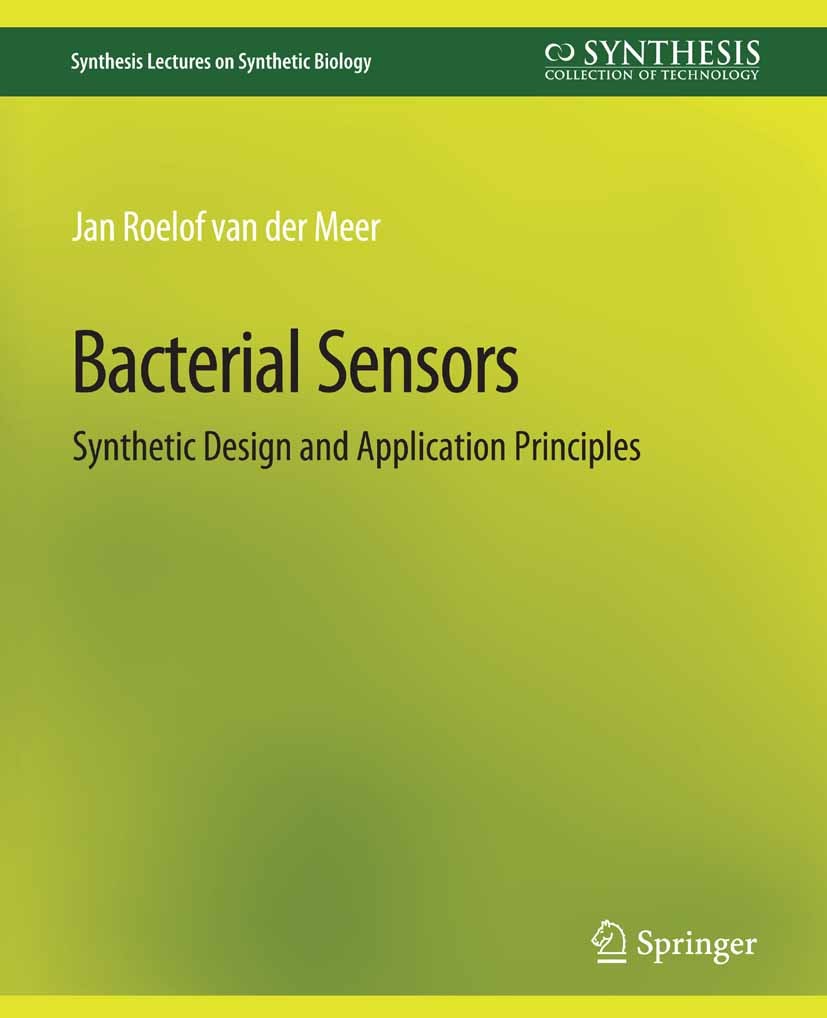 |
ספר אלקטרוני
Meer, Jan Roelof van der Bacterial sensors : synthetic design and application principles Cham, Switzerland : Springer, 2011 נושאים נושאי MESH תיאור/תקציר Bacterial reporters are live, genetically engineered cells with promising application in bioanalytics. They contain genetic circuitry to produce a cellular sensing element, which detects the target compound and relays the detection to specific synthesis of so-called reporter proteins (the presence or activity of which is easy to quantify). Bioassays with bacterial reporters are a useful complement to chemical analytics because they measure biological responses rather than total chemical concentrations. Simple bacterial reporter assays may also replace more costly chemical methods as a first line sample analysis technique. Recent promising developments integrate bacterial reporter cells with microsystems to produce bacterial biosensors. This lecture presents an in-depth treatment of the synthetic biological design principles of bacterial reporters, the engineering of which started as simple recombinant DNA puzzles, but has now become a more rational approach of choosing and combining sensing, controlling and reporting DNA 'parts'. Several examples of existing bacterial reporter designs and their genetic circuitry will be illustrated. Besides the design principles, the lecture also focuses on the application principles of bacterial reporter assays. A variety of assay formats will be illustrated, and principles of quantification will be dealt with. In addition to this discussion, substantial reference material is supplied in various Annexes. תוכן עניינים Preface -- Acknowledgments -- 1. Short history of the use of Bacteria for biosensing and bioreporting -- Early warning systems -- Early use of bacterial "bioreportesr" -- References. 2. Genetic engineering concepts -- Introduction to genetic sensing/-reporting circuits -- Central idea -- Intercept design -- Orthogonal design -- Design parts -- Use of transcriptional activators -- Choice of regulatory proteins -- The XylR/DmpR family of transcription activators -- The HbpR system -- Use of transcriptional repressors -- Regulators from heavy metal resistance -- The MerR system -- ArsR-based designs for arsenic detection -- Network interception designs -- General motivation -- SOS response network intercept design -- Promoter engineering -- General notions -- Promoter engineering in the Ars system -- Physiological control of the XylR-regulated Pu promoter -- Dual responsive control switches -- Directed evolution of promoters -- Response heterogeneity in populations -- Engineering new effector specificities -- General concept -- Effector domain mutagenesis in XylR/DmpR-type proteins -- Effector binding pocket modeling -- Aptamers -- Complex signal-transduction chains -- General concept -- Periplasmic binding proteins and phosphotransfer relay -- Multinode networks -- Logic gates, transcriptional noise, amplification -- Reporter proteins -- Choice and specificities of common reporter proteins -- Reporter gene vectors -- Embedding of sensing/-reporting circuits in a cellular chassis -- References. 3. Measuring with bioreporters -- Assay principles -- Relative and absolute measurements -- End-point and kinetic measurements, measurement transformations -- Population measurements -- Spiking -- Theory of analyte provision and transport -- Calculation of compound concentrations in reporter cells -- Non-diffusive and non-conservative bioreporters -- Concept of bioavailability and bioaccessibility -- Bioavailable fractions -- Bioavailability and bioaccessibility reporter measurements -- Bioreporter assay types -- Aqueous assays -- Gas phase measurements -- Solid phase assays -- Method detection limits, accuracy and precision -- References. 4. Epilogue -- Summary -- Future directions -- References. A. Bacterial bioreporter designs targeting organic compounds -- References -- B. Bacterial bioreporter designs targeting (heavy) metals and metalloids -- References -- C. Bacterial bioreporter designs responsive to toxicity or stress conditions -- References -- D. Example bioreporter protocols -- Quantitative arsenite measurements with an E. coli LuxAB Luciferase bioreporter -- References -- Arsenic measurement using an E. coli GFP biosensor by epifluorescence microscopy -- References -- Arsenic measurements with an E. coli beta-galactoside bioreporter -- References -- Sample pretreatment -- Water -- Rice -- References -- Author's biography
|
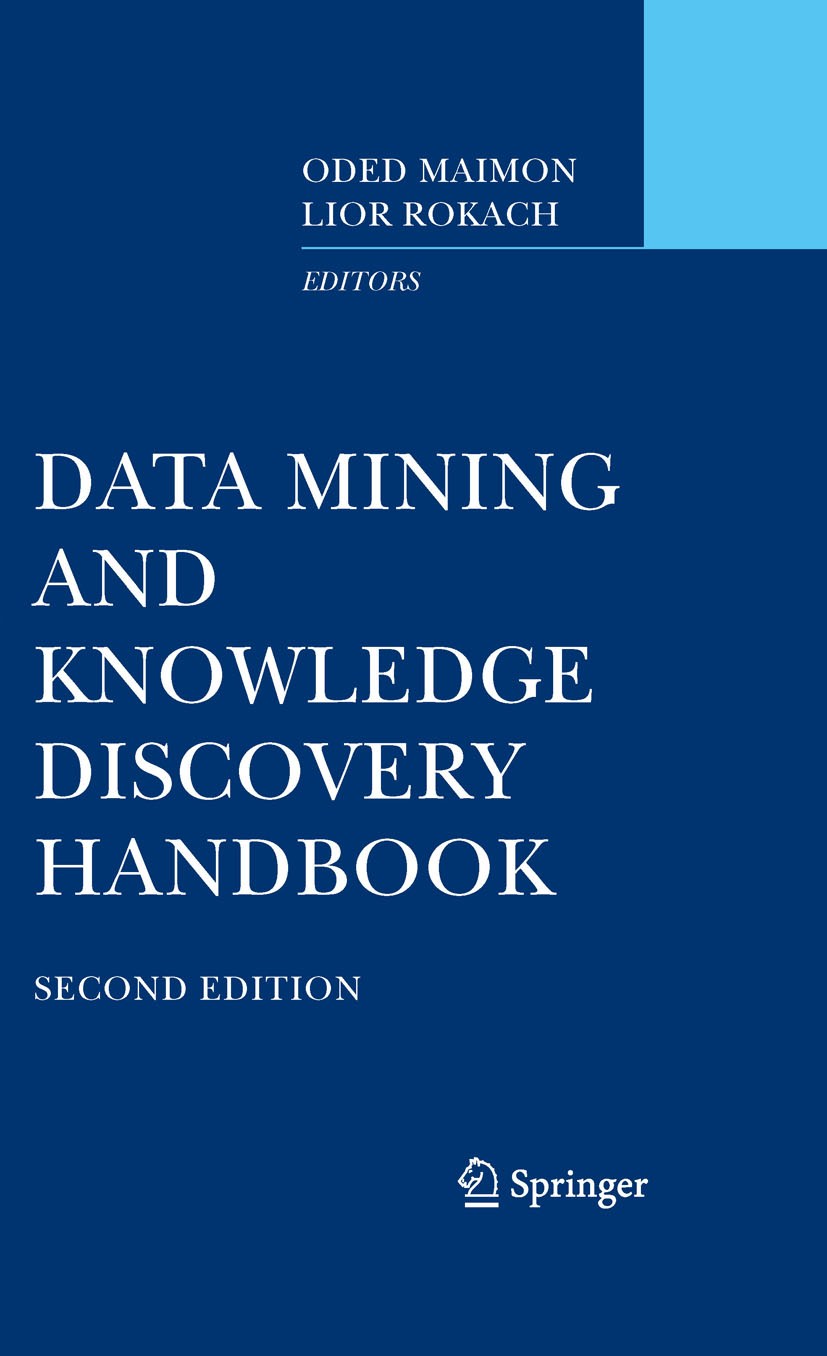 |
ספר אלקטרוני
Maimon, Oded, and Rokach, Lior Data mining and knowledge discovery handbook / 10th ed.
New York ; London : Springer, 2010 נושאים Knowledge acquisition (Expert systems) נושאי MESH תיאור/תקציר Knowledge Discovery demonstrates intelligent computing at its best, and is the most desirable and interesting end-product of Information Technology. To be able to discover and to extract knowledge from data is a task that many researchers and practitioners are endeavoring to accomplish. There is a lot of hidden knowledge waiting to be discovered - this is the challenge created by today's abundance of data. Data Mining and Knowledge Discovery Handbook, Second Edition organizes the most current concepts, theories, standards, methodologies, trends, challenges and applications of data mining (DM) and knowledge discovery in databases (KDD) into a coherent and unified repository. This handbook first surveys, then provides comprehensive yet concise algorithmic descriptions of methods, including classic methods plus the extensions and novel methods developed recently. This volume concludes with in-depth descriptions of data mining applications in various interdisciplinary industries including finance, marketing, medicine, biology, engineering, telecommunications, software, and security. Data Mining and Knowledge Discovery Handbook, Second Edition is designed for research scientists, libraries and advanced-level students in computer science and engineering as a reference. This handbook is also suitable for professionals in industry, for computing applications, information systems management, and strategic research management. תוכן עניינים pt. 1. Preprocessing methods -- pt. 2. Supervised methods -- pt. 3. Unsupervised methods -- pt. 4. Soft computing methods -- pt. 5. Supporting methods -- pt. 6. Advanced methods -- pt. 7. Applications -- pt. 8. Software
|
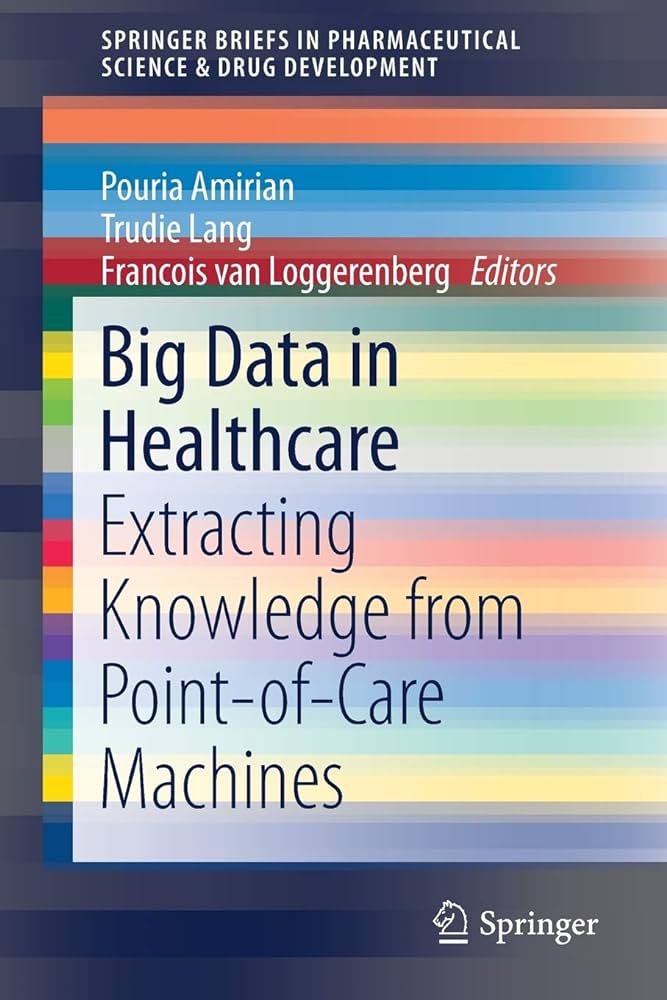 |
ספר אלקטרוני
Big data in healthcare : extracting knowledge from point-of-care machines
Cham, Switzerland : Springer, 2017 נושאים נושאי MESH Medical informatics -- Methods Public health surveillance -- Methods תיאור/תקציר "This book reviews a number of issues including: Why data generated from POC machines are considered as Big Data. What are the challenges in storing, managing, extracting knowledge from data from POC devices? Why is it inefficient to use traditional data analysis with big data? What are the solutions for the mentioned issues and challenges? What type of analytics skills are required in health care? What big data technologies and tools can be used efficiently with data generated from POC devices? This book shows how it is feasible to store vast numbers of anonymous data and ask highly specific questions that can be performed in real-time to give precise and meaningful evidence to guide public health policy."-- Provided by publisher תוכן עניינים About the Editors; 1 Introduction-Improving Healthcare with Big Data; 1.1 Introduction; 1.2 Big Data and Health; 1.3 Big Data and Health in Low- and Middle-Income Countries; 1.3.1 Analytical Challenges; 1.3.2 Ethical Challenges; 1.3.2.1 Informed Consent; 1.3.2.2 Privacy; 1.3.2.3 Ownership; 1.3.2.4 Epistemology and Objectivity; 1.3.2.5 Big Data 'Divides'; 1.4 Conclusion and Structure of the Book; References; 2 Data Science and Analytics; 2.1 What Is Data Science?; 2.2 Methods in Data Science; 2.2.1 Supervised and Unsupervised Learning; 2.2.2 Data Science Analytical Tasks. 2.3 Data Science, Analytics, Statistics, Business Intelligence and Data Mining2.3.1 Data Science and Analytics; 2.3.2 Statistics, Statistical Learning and Data Science; 2.3.3 Data Science and Business Intelligence; 2.4 Data Science Process; 2.4.1 CRISP-DM; 2.4.2 Domain Knowledge and Business Understanding; 2.4.3 Data Understanding and Preparation; 2.4.4 Building Models and Evaluation Metrics; 2.4.5 Model Deployment; 2.5 Data Science Tools; 2.6 Summary; References; 3 Big Data and Big Data Technologies; 3.1 What Is Big Data?; 3.2 Data Dimension of Big Data; 3.2.1 Volume; 3.2.2 Velocity. 3.2.3 Variety3.2.4 Other Vs of Big Datasets; 3.3 Structured, Unstructured and Semi-structured Data; 3.3.1 Internet of Things and Machine-Generated Data; 3.3.2 Highly Connected Data; 3.4 Big Data Technologies; 3.4.1 Building Blocks of Hadoop: HDFS and MapReduce; 3.4.2 Distributed Processing with MapReduce; 3.4.3 HDFS and MapReduce; 3.4.4 Hadoop Ecosystem: First Generation; 3.4.5 Hadoop Ecosystem Second Generation; 3.5 Splunk: A Commercial Big Data Technology; 3.6 Big Data Pipeline: Lambda and Kappa Architectures; 3.6.1 Lambda Architecture; 3.6.2 Kappa Architecture. 3.7 Big Data Tools and TechnologiesReferences; 4 Big Data Analytics for Extracting Disease Surveillance Information: An Untapped Opportunity; 4.1 Introduction; 4.2 The Importance of POC; 4.3 Technical Requirements of POC; 4.4 Data Generated by POC and Accessibility Issue; 4.5 Proposed Solution; 4.5.1 Common Data Structure of the Proposed Solution; 4.5.2 Data Analytics in the Proposed Solution; 4.6 Big Data Architecture of the Proposed Solution; 4.7 Benefits of the Implemented System; 4.8 The Implemented Data Analytics and Dashboards; 4.9 Conclusions and Future Work; References.
|
 |
ספרי אלטרוני
Gilboa, Itzhak Cambridge, Mass. : MIT Press, 2010 נושאים תיאור/תקציר A nontechnical, concise, and rigorous introduction to the rational choice paradigm, focusing on basic insights applicable in fields ranging from economics to philosophy. תוכן עניינים Preface; Suggested Reading; I Optimization; 1 Feasibility and Desirability; 2 Utility Maximization; 3 Constrained Optimization; II Risk and Uncertainty; 4 Expected Utility; 5 Probability and Statistics; III Group Choices; 6 Aggregation of Preferences; 7 Games and Equilibria; 8 Free Markets; IV Rationality and Emotions; 9 Evolutionary View of Emotions; 10 Utility and Well-Being; Epilogue; Notes; Index
|
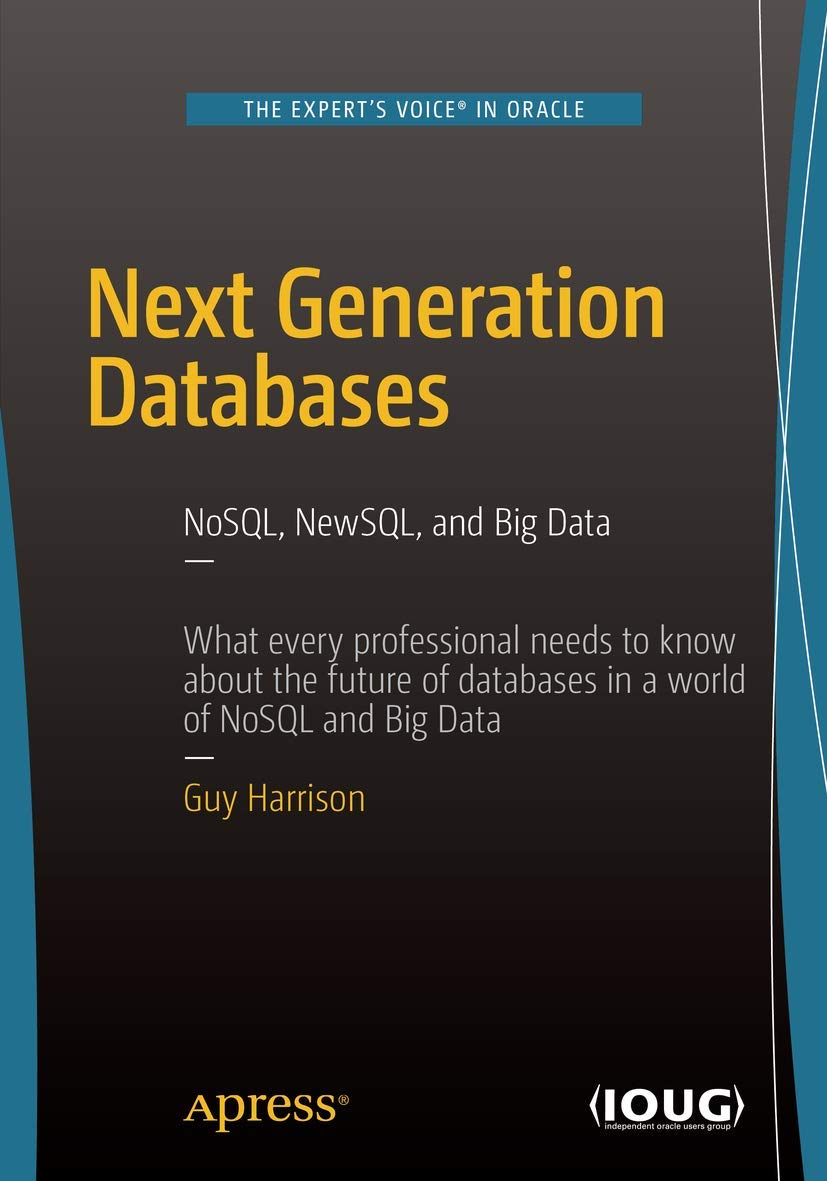 |
ספר אלקטרוני
Harrison, Guy
Next generation databases : NoSQL, NewSQL, and Big Data. Berkeley, California : Apress, 2015 נושאים תיאור/תקציר This is a book for enterprise architects, database administrators, and developers who need to understand the latest developments in database technologies. It is the book to help you choose the correct database technology at a time when concepts such as Big Data, NoSQL and NewSQL are making what used to be an easy choice into a complex decision with significant implications. The relational database (RDBMS) model completely dominated database technology for over 20 years. Today this "one size fits all" stability has been disrupted by a relatively recent explosion of new database technologies. These paradigm-busting technologies are powering the "Big Data" and "NoSQL" revolutions, as well as forcing fundamental changes in databases across the board. Deciding to use a relational database was once truly a no-brainer, and the various commercial relational databases competed on price, performance, reliability, and ease of use rather than on fundamental architectures. Today we are faced with choices between radically different database technologies. Choosing the right database today is a complex undertaking, with serious economic and technological consequences. Next Generation Databases demystifies today?s new database technologies. The book describes what each technology was designed to solve. It shows how each technology can be used to solve real word application and business problems. Most importantly, this book highlights the architectural differences between technologies that are the critical factors to consider when choosing a database platform for new and upcoming projects.? Introduces the new technologies that have revolutionized the database landscape? Describes how each technology can be used to solve specific application or business challenges? Reviews the most popular new wave databases and how they use these new database technologies. Demystifying todауѫs new database technologies, this insightful book will help you choose the correct database technology at a time when concepts such as Big Data, NoSQL and NewSQL are making what used to be an easy choice into a complex decision with significant implications. -- Edited summary from book. תוכן עניינים At a Glance; Contents; About the Author; About the Technical Reviewer; Acknowledgements; Part I: Next Generation Databases ; Chapter 1: Three Database Revolutions; Early Database Systems; The First Database Revolution; The Second Database Revolution; Relational theory; Transaction Models ; The First Relational Databases; Database Wars!; Client-server Computing ; Object-oriented Programming and the OODBMS ; The Relational Plateau; The Third Database Revolution; Google and Hadoop ; The Rest of the Web; Cloud Computing ; Document Databases ; The " NewSQL " The Nonrelational Explosion Conclusion: One Size Doesn't Fit All; Notes; Chapter 2: Google, Big Data, and Hadoop; The Big Data Revolution; Cloud, Mobile, Social, and Big Data; Google: Pioneer of Big Data; Google Hardware; The Google Software Stack; More about MapReduce ; Hadoop: Open-Source Google Stack; Hadoop's Origins; The Power of Hadoop; Hadoop's Architecture ; HBase ; Hive ; Pig ; The Hadoop Ecosystem ; Conclusion; Notes; Chapter 3: Sharding, Amazon, and the Birth of NoSQL; Scaling Web 2.0; How Web 2.0 was Won; The Open-source Solution; Sharding. Death by a Thousand Shards CAP Theorem ; Eventual Consistency; Amazon's Dynamo; Consistent Hashing; Tunable Consistency; Dynamo and the Key-value Store Family; Conclusion; Note; Chapter 4: Document Databases; XML and XML Databases; XML Tools and Standards ; XML Databases; XML Support in Relational Systems ; JSON Document Databases; JSON and AJAX ; JSON Databases ; Data Models in Document Databases; Early JSON Databases; MemBase and CouchBase ; MongoDB ; JSON, JSON, Everywhere; Conclusion; Chapter 5: Tables are Not Your Friends: Graph Databases; What is a Graph? RDBMS Patterns for Graphs RDF and SPARQL ; Property Graphs and Neo4j ; Gremlin ; Graph Database Internals; Graph Compute Engines; Conclusion; Chapter 6: Column Databases; Data Warehousing Schemas; The Columnar Alternative; Columnar Compression ; Columnar Write Penalty ; Sybase IQ, C-Store, and Vertica; Column Database Architectures; Projections; Columnar Technology in Other Databases; Conclusion; Note; Chapter 7: The End of Disk? SSD and In-Memory Databases; The End of Disk?; Solid State Disk; The Economics of Disk; SSD- Enabled Databases ; In-Memory Databases; TimesTen. Redis SAP HANA ; VoltDB ; Oracle 12c "in-Memory Database"; Berkeley Analytics Data Stack and Spark; Spark Architecture ; Conclusion; Note; Part II: The Gory Details ; Chapter 8: Distributed Database Patterns; Distributed Relational Databases; Replication; Shared Nothing and Shared Disk ; Nonrelational Distributed Databases; MongoDB Sharding and Replication; Sharding; Sharding Mechanisms ; Cluster Balancing ; Replication ; Write Concern and Read Preference ; HBase; Tables, Regions, and RegionServers; Caching and Data Locality ; Rowkey Ordering
|
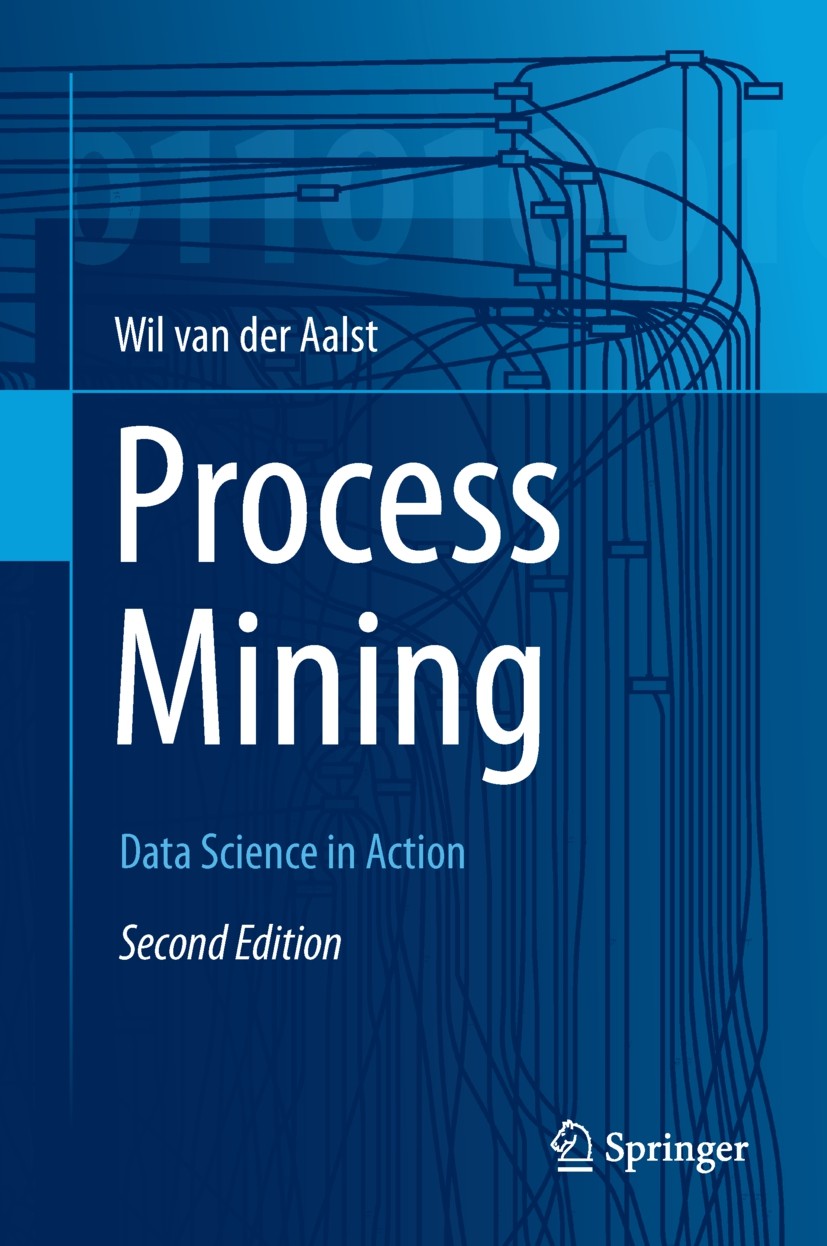 |
ספר אלקטרוני
Aalst, Wil van der
Process mining : data science in action / 2nd ed.
Heidelberg : Springer, 2016 נושאים תיאור/תקציר This is the second edition of Wil van der Aalst's seminal book on process mining, which now discusses the field also in the broader context of data science and big data approaches. It includes several additions and updates, e.g. on inductive mining techniques, the notion of alignments, a considerably expanded section on software tools and a completely new chapter of process mining in the large. It is self-contained, while at the same time covering the entire process-mining spectrum from process discovery to predictive analytics. After a general introduction to data science and process mining in Part I, Part II provides the basics of business process modeling and data mining necessary to understand the remainder of the book. Next, Part III focuses on process discovery as the most important process mining task, while Part IV moves beyond discovering the control flow of processes, highlighting conformance checking, and organizational and time perspectives. Part V offers a guide to successfully applying process mining in practice, including an introduction to the widely used open-source tool ProM and several commercial products. Lastly, Part VI takes a step back, reflecting on the material presented and the key open challenges. Overall, this book provides a comprehensive overview of the state of the art in process mining. It is intended for business process analysts, business consultants, process managers, graduate students, and BPM researchers. תוכן עניינים Introduction -- Preliminaries -- From Event Logs to Process Models -- Beyond Process Discovery -- Putting Process Mining to Work -- Reflection -- Epilogue
|
- כתבות, חדשות ואירועים



